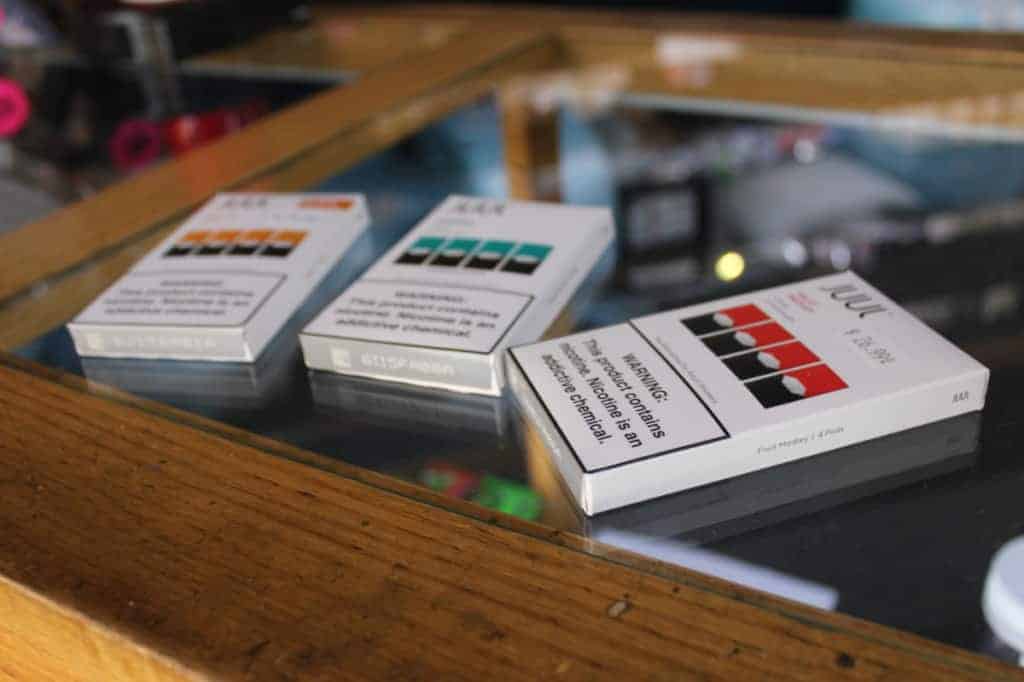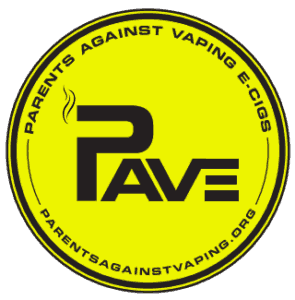

In writing about the issue of student vaping, there has been a familiar face at several events I’ve attended across the state, from Mooresville High School’s information night on student vaping to the Region 4 Tobacco-Free Alliance meeting and Youth Empowered Solutions’ tobacco prevention training. Her name is Kelly Kinard. She’s a High Point mom who’s speaking out about the challenges her family faced when her son, Luka, became nicotine-addicted after vaping Juul e-cigarettes.
Her story has not only been shared at community events, she’s been interviewed by the Wall Street Journal and even presented at the F.D.A. public hearing on e-cigarettes earlier this year. Her son, Luka, also speaks publicly about his experience, so that other adolescents can get a better understanding of the consequences of vaping.
“I tell everyone who will listen now, about what Luka’s been through…” Kinard said. “By keeping it quiet, I’m showing him that we’re ashamed of him, and we’re actually very proud.”
Her story
Kinard’s son, Luka, started high school in the fall of 2017. That’s the first time she ever heard him talk about Juul.
“I’m thinking j-e-w-e-l,” she said. At the time, she hadn’t heard anything about it, not even in the news.
Even when she started seeing her son using a Juul, she wasn’t all that concerned. He had already experimented with cigarettes and chewing tobacco, so when he started vaping, she didn’t find cause for worry.
“Like everyone else in the world, I heard it was a healthier alternative to smoking,” she said.
But soon afterwards, she started noticing behavioral issues in her son, and the shift was rapid.
“It was zero to 100,” she said. “The explosiveness, it happened immediately.”
But she didn’t associate it with Juuling at the time. Instead, it was a guessing game — she thought her son could be experiencing anything from adolescent onset psychiatric problems to undiagnosed anger issues, and so she put him in counseling to help deal with his anger.
“I just didn’t realize where the anger was coming from,” Kinard said, not connecting it to nicotine. His counselor diagnosed him with Intermittent explosive disorder (IED). It would be the first incorrect diagnosis of many.
They went on to family counseling to help in communication with their son. The family counselor provided a diagnosis of Oppositional defiant disorder (ODD).
But Kinard said by the time they decided to go to family counseling, she was already connecting her son’s behavior changes to Juul and nicotine. When she told both counselors that she thought his issues were all nicotine-related, she remained alone in that assumption. They stayed in counseling for nine months, with little result.
“No one would acknowledge that his symptoms could be connected to nicotine,” she said. “Not the counselors, not the doctors.”
So Kinard decided to take her son to a psychiatrist after the diagnoses and present the problem as a nicotine issue — to see if he knew something the family didn’t know, or if he had other tools for getting an adolescent off of nicotine.
“He was completely ineffective,” she said. “He just asked us, ‘Well, what do you want me to put him on?'”
She started to call treatment centers for any sort of therapy, only to find that none in the area provided treatment for adolescents or nicotine.
“If they treated adolescent substance abuse, they refused to even discuss a nicotine addiction,” she said, because they weren’t considering it a substance abuse problem.
“I think that feeling among the medical community is continuing on today, because of all the parents I’m still hearing from who are trying to get help for their kids,” she said. “They’re getting the same reaction I did from their medical professionals.”
She thinks part of it may be because they’re treating the issue as a regular cigarette-smoking habit.
“They’re not understanding that the Juul goes way beyond it,” Kinard said. “And everyone I talk to, the problem is the Juul, not the other vape devices. It’s the Juul. It’s the strength of the nicotine.”
That’s because when Juul pods came on the market, they carried twice the amount of nicotine than other e-liquids, at 5% nicotine. It’s estimated that one Juul pod has roughly the same amount of nicotine as one pack of cigarettes. In comparison, an e-cigarette competitor, Blu, sells cartridges ranging from 1.6 to 2.4% nicotine. And there has been a backlash to these high levels of nicotine — to which Juul Labs responded by releasing a 3% nicotine option made widely available in October.
Other countries, like England, didn’t even allow Juul to hit their markets with the same nicotine levels. Due to the Tobacco Products Directive, British Juul pod nicotine concentrations are limited to about one-third the levels of the American Juul pod.
“I had read that and I actually thought, ‘We should move to Europe!” Kinard said, laughing at how absurd the situation was. “I was thinking everything possible, and we were desperate.”
Finding treatment
In September 2018, Luka had a seizure. It was a turning point for Kinard. She was going to get her son into a treatment center, no matter what, and she found her answer: a dual-diagnosis treatment program in California.
“I read that the most effective adolescent substance abuse treatment is dual-diagnosis treatment,” said Kinard, “where they treat the behavior that led up to [the addiction], whether it’s depression or anxiety, and the behavior that came along with it.”
In Luka’s case, she said he did have anxiety starting high school because he was scared to death about fitting in.
“The dual-diagnosis, I think, helps because it treats the whole kid,” Kinard said. “It treated his anxiety, which he was medicating with the Juul, but then the Juul would cause more anxiety, so it turned out being a terrible cycle.”
The center in California treated everything an adolescent has to deal with: social media, sexuality, school issues, fitting in — anything that an adolescent is facing. So the center was perfect for a high schooler like Luka, but convincing him to go was an entirely different matter. Kinard told a white lie — that treatment would only be 8 days — to convince him to get on an airplane.
“He will forever give us a hard time about that,” she said. “But he does admit that he wouldn’t have gone otherwise. If he had known that it was at least 30 days, which it ended up being 39, but 30 is what they start with — he wouldn’t have gone.”
The lie was hard on Kinard, and even the treatment center disapproved. “But how else were we going to get him on an airplane?” she said.
After treatment
Luka returned from treatment in early December 2018, and by Kinard’s account, is now doing great.
“He’s fine about going to school and being around [Juuls], because fortunately, once his brain turned around, he was able to take a look at himself and see that he was the problem — not us,” she said. “I don’t think he wants to go back to that, now that he realizes how much it changed him and how unhealthy it was and how it was making him behave.”
He’s returned to his old self, before Juul — well-spoken, poised, nice, kind, funny.
“But for 15 months, that kid was not here,” Kinard said. “It’s an amazing difference.”
As a mother, though, she still worries about her son. Whenever he sometimes acts like a typical teenager, smarting off, she finds herself thinking, ‘Oh my God, I hope he’s not Juuling again.'” And they do still test Luka, randomly, for nicotine — but he’s never tested positive.
“He’s still surrounded by Juulers, and he still has stress from being a teenager,” Kinard said. “And he’s human. Adults fall off the wagon, why not a kid?”
Kinard is not alone
While Kinard’s situation may sound drastic, she knows she isn’t alone. Now that her story has been made public, she hears from parents all the time.
“I talked to one just the other day who was crying on the phone,” she said. “I felt so bad for her.”
That’s because Kinard could relate.
“We were desperate. We were confused,” she said. “The despair we felt — we didn’t know what to do. We were embarrassed, because our son all of a sudden over night turned into someone we didn’t know or raise. We were concerned for his future. The hardest part, I didn’t think he was going to graduate from high school.”
In her communications with concerned parents, Kinard noted another trend: the children happen to be 14 or 15 years old, which she doesn’t think is a coincidence.
“There’s got to be something that has to do with that level of brain development at that age,” she said.
“What I’m hearing from parents is that their kids pretty much acted like Luka,” Kinard said. “To start, these were all high-functioning kids with good behavior, good grades, Eagle Scouts, or Boy Scouts, or into sports.”
The flip in behavior had resulted in the adolescents becoming explosive, aggressive, and impossible to be reasoned with. There have also been close to handful of concerned parents letting her know their child also had a seizure after heavy vaping.
Though Kinard can relate to what these parents are going through, she says she can’t tell parents what to do — all she can tell them is what she did. Her biggest advice is to give their child an ultimatum, like “Here’s the problem, and here are your choices.” She also recommends getting their child into counseling, because a diagnosis from counseling will show medical-necessity for insurance to cover treatment.
As Kinard continues to speak about what happened to her son, she also has thoughts behind the company that she says got her son addicted to nicotine in the first place.
“The fact that they made something that had such a massive dose of nicotine in it and then marketed it towards our children is just unbelievable to me,” she said. She also doesn’t think proposed solutions like removing certain flavors will stop children from getting ahold of Juuls. She believes if kids are addicted, they will vape regardless.
“And they might move onto other things,” Kinard said. “Other substances, or cigarettes, or whatever — but they’re going to have to have something.”
Looking back on her experience, Kinard said the hardest part about her son’s nicotine addiction was the fear, despair, and helplessness she felt. “No one could help us,” she said. “No one wanted to help us, and no one would acknowledge that we needed help.”
“If we had the information that we have today, that’s out there now, I think we could’ve done a lot more to avoid this from happening from the start,” Kinard said. “But there wasn’t that information because all that we were aware of was that ‘vaping is healthier than smoking.'”
Resources
Below are some helpful e-cigarette resources for parents:


Truth Initiative’s e-cigarette quit program
CATCH My Breath parent resources


